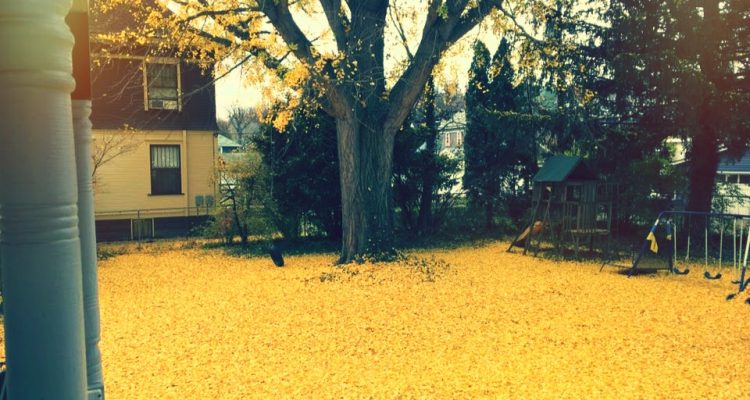Feature Photo by Jeremy Larence
Story Photos by Rich Knoblich
If all of the leaves present would please stop rustling and give me your attention. Thank you. I would like to pause a moment to congratulate each leaf that has survived this far into the autumn season. The forest did lose a few during the late September cold snap, but frankly, they were expendable hanger-ons who failed to contribute during this crucial shut down period.

As the heartwood of a sweet gum tree I have an important announcement concerning your immediate future. There’s been a lot of ugly talk going around the forest about a fellow named Jack Frost decorating your chlorophyll. This is just an urban rumor perpetuated by nasty gypsy moths. I am here to set the record straight.
Many of you have noticed an unusual change in the plant chemistry of the deciduous tree on which you reside. Please take a moment to look at the lamina beside you. It might be a good idea to bid a fond adieu, for a month from now you will be gone. A question Sugar Maple? No, I said a fond adieu, not fondue. Pay attention.
Leaves, if you’ll close your stoma for a moment I would like for you to remember how it was last spring.

Recall, if you will, how your humble beginnings occurred the previous year. Recall, if you will, surviving the wintry blasts as a dormant winter bud. You can almost feel the freezing north wind blast of an Alberta Clipper nipping at your bud scales, can’t you?

But eventually, the temperate wet rains of spring showered down, and the longer, brighter days triggered your growth. You might remember the initial lengthening of your petioles with the sap oozing through the phloem from the roots where it had been stored. At this time your chloroplasts became busy. The chlorophyll contained within became energized by the warmth of the sun and the brightness of the light. It was a heady experience as you coordinated with the sun’s light energy to perform the electron transfer necessary to make food. You engaged in photosynthesis for making the simple sugars, transpiration for evaporating the excess water and respiration to give off waste products as the tree grew. Photosynthesis, transpiration, respiration!

Back and forth the chlorophyll moved as the simple sugars coursed through the xylem to all parts of the plant. You were the engine for feeding and building new body parts for the entire plant. At the time you were green because of the dominance of the green pigment, chlorophyll. It is quite efficient at absorbing the long red wavelengths and short blue-violet waves of the sun. With these colors being absorbed you reflected mostly the green colors. But masked by the green pigment were other admirable pigments. Make friends now with the yellow xanthophyll, the orange carotenoid, and my personal favorite the reddish to blue anthocyanins.
But as summer wanes and the days grow shorter, the lack of stimulating light is causing a change in plant chemistry. A layer of cork cells have formed at the abscission zone where you are joined to the stem. This blockage can be quite painful since the normal delivery of water and minerals are cut off. Withdrawal symptoms may occur. The first to go is the green pigment, chlorophyll, thereby exposing the vibrant red, yellow, and orange pigments that have been residing within you all along. With the cool nights and sunny days these colors are heightened. A process that was initiated and now ended by Mr. Sol is being fine tuned by the weather. This bright, almost gaudy display, is Mother Nature’s way of saying ‘Thank you, for a job well done’.

A quick review of your accomplishments. Fruit was plentiful. The root system expanded into the Jones’s septic field. New heights have been reached by the crown. But soon the harsh frosts of night will cause the final breakdown of all the cells. You will be left hanging and twisting in the breeze like a bad apple. The principal reason for this downsizing is because the onslaught of winter will create a freezing of the water supply. It is necessary to conserve resources. Food reserves from the simple sugars you created have been stored in the roots and the next generation of buds await. Once the cork cells dissolve you will either float to the ground in a gentle spiraling ballet or go hurtling downward like a meteor flaming out. Either way, your task for the growing season is complete.
But don’t feel sorry for yourselves. As you rot into a rich compost on the forest floor and release your stored minerals, we will gladly absorb your nutrients from the soil sometime in the future. We here in the heartwood are grateful. Finally, I’d like to remind you to please remember to reuse, recycle, and conserve.

Feature Photo by Jeremy Larence



